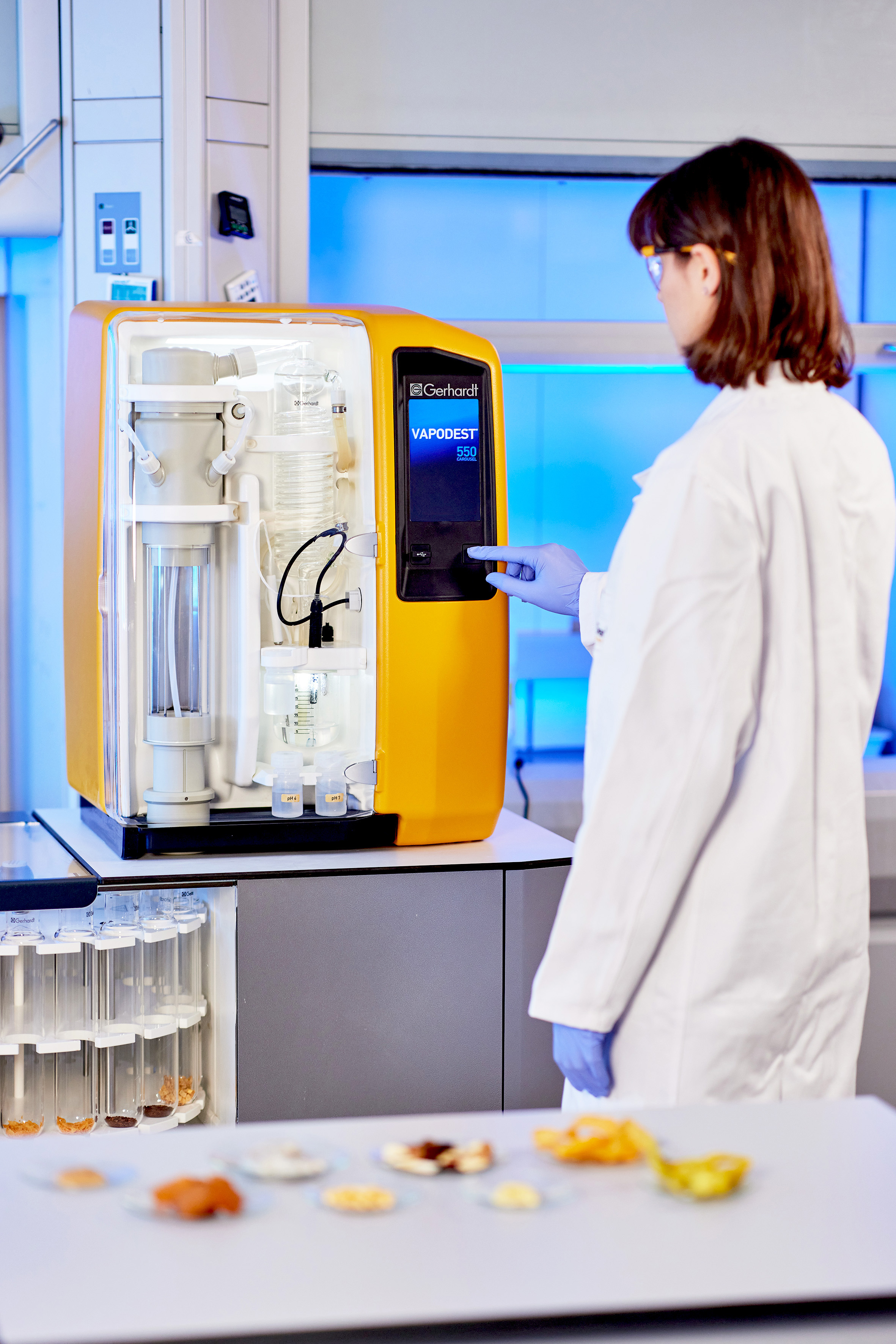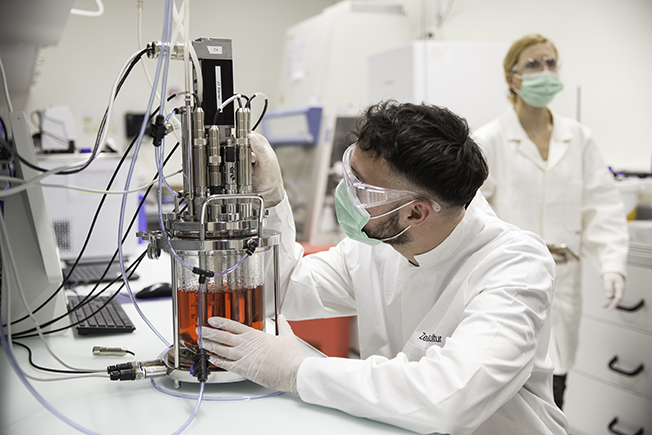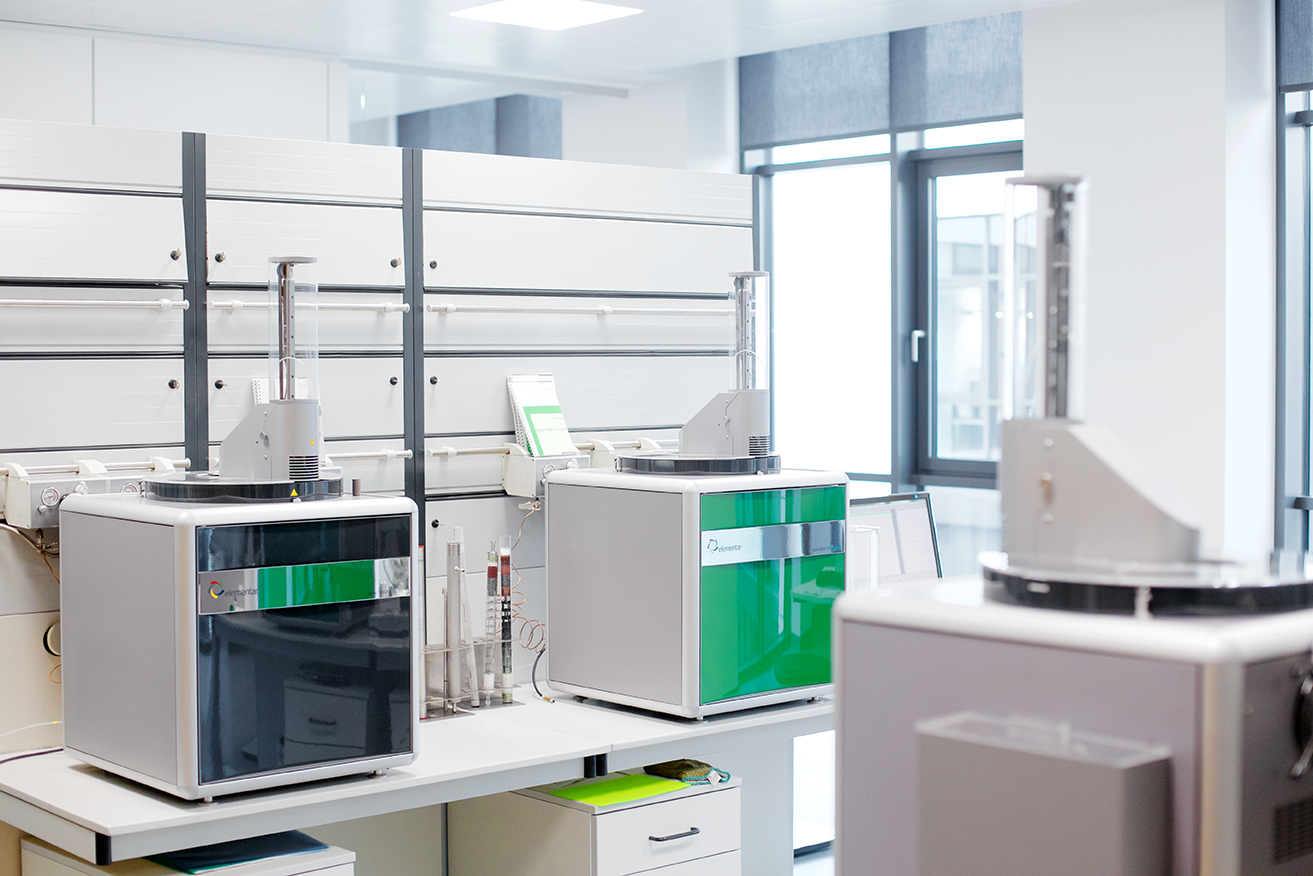

Beyond the numbers: Expert consultation for choosing the best protein analysis method
Michelle Kuzio & Pedro Braun Streb explore the Kjeldahl and Dumas methods, used to measure nitrogen content, a key protein indicator. They also delve into Gerhardt’s advanced analyzers and their partnership with Xylem Laboratory Solutions, which is empowering alt-protein companies to make better products
Often referred to as the unsung heroes in alternative protein development, protein nitrogen analyzers provide a crucial foundation for the development of nutritious and high-quality alternative protein sources. Germany’s Gerhardt Analytical Systems is a leading company specializing in the tools for such analysis, and offers highly advanced solutions based on both the Kjeldahl and Dumas methodologies.

“We are Gerhardt’s exclusive North American distributing partner, which allows us to offer a full range of Gerhardt’s instruments for a variety of applications across many industries,” begins Michelle Kuzio, Product Manager, Xylem Laboratory Solutions, Americas. “This ensures we can deliver cutting-edge technology to address the entire spectrum of our customers’ testing requirements.”
“We view this collaboration as a two-way commitment,” explains Pedro Braun Streb, Deputy Sales Manager for Europe at Gerhardt. “Firstly, we require a distributor with a comprehensive solution portfolio. Their instruments should really complement our offerings, creating a synergistic effect that delivers exceptional value to our end-customers. Xylem perfectly fulfils this. Secondly, the human element is crucial. Our ideal partner shares Gerhardt’s core values: they must possess a thorough understanding of analytical chemistry and the intricacies of our systems, and their dedication to customer service should mirror our own.”
Experience counts
Founded around 178 years ago, Gerhardt boasts a rich history in the field, originally supplying general lab equipment such as flasks. However, it made a big breakthrough in 1986 by developing the first automated steam distillation unit specifically for the Kjeldahl method – an innovation that marked the company’s entry into automating various food analysis parameters, including protein, fat, and fiber content analysis.
A significant portion of Gerhardt’s business (particularly in Germany – around 40-50%) involves collaboration with public and private research institutes, including many universities. Braun Streb says these partnerships are crucial for staying at the forefront of innovation in food analysis. “One noteworthy example shows this commitment,” he reports. “We’re working with the Research Institute of Feed Technology in Braunschweig and Dr Patrick Sudwischer, a pioneer in researching insect protein analysis.
“Customer input is paramount,” Braun Streb says. “We actively engage with key accounts and distribution partners to understand their challenges. A recurring theme is the need for sustainable solutions in the face of new raw materials and evolving regulations. European regulations are constantly being updated, and our partners look to us for guidance on how to navigate these changes while maintaining the same high standards of analysis. This collaborative approach ensures that Gerhardt remains at the forefront of developing solutions that meet the evolving needs of the food analysis industry.”

Kjeldahl versus Dumas
So, if you’re part of your company’s lab team, which of the Kjeldahl and Dumas systems should you be using? Well, that depends on various factors, including the lab’s environment, staff expertise, and the type of samples being analyzed, so a careful evaluation of these factors is crucial to ensure the chosen method delivers accurate and efficient nitrogen determination.
Gerhardt offers the N-REALYZER, a fully automated instrument used for nitrogen analysis according to the Dumas method. It can handle up to 100 samples, regardless of whether they are solid, liquid, or have high or low nitrogen content. The instrument has a user-friendly interface and is designed for tool-free handling, making it simple and safe to operate. It is also designed to be resource-efficient: durable components and high-quality consumables help to minimize costs per sample. The N-REALYZER even has an automated system check feature to ensure safe operation, even when left unattended.
The VAPODEST 500 and VAPODEST 500 C distillation systems are powerful tools for laboratories performing frequent Kjeldahl analyses. The ‘C’ in the former signifies the presence of an autosampler, which lets you automatically feed up to 20 samples into the distillation unit, further minimizing manual intervention. It automates the entire distillation process, including titration, allowing lab staff to analyze more samples in less time. It also features a microdosing pump and advanced software for highly accurate results, potentially exceeding the performance of traditional burettes. The system ensures data integrity through automatic logging and standardized data management. Designed for ease of use, it even has a built-in dashboard for intuitive operation and data analysis. It also comes with features such as level sensors for waste and chemical canisters, making it easy to monitor and maintain.
“The Kjeldahl method involves breaking down the sample with sulfuric acid and converting the nitrogen into a form that can be easily measured by titration, which Xylem offers,” explains Kuzio. “The other method, Dumas, involves burning the sample at high temperatures to convert the nitrogen into gas, which is then measured by a TCD (thermal conductivity detector). Both methods are suited for measuring very low levels of protein and achieve the same goal, although they take different approaches.”
According to Braun Streb, the Dumas method offers advantages in safety, throughput, speed, and automation, making it a compelling choice for many labs. The Kjeldahl method, meanwhile, has proved invaluable for lower throughput labs in some cases. However, both the Dumas and Kjeldahl methods excel for alternative protein analysis.
For labs with lower volumes of samples, or those working with diverse protein sources analyzed for various applications, Braun Streb suggests the flexibility of Kjeldahl might be more practical. Kjeldahl can handle a wider range of sample types, which is beneficial when analyzing various sources such as mycoprotein, insect biomass, or cell-cultured meat.
Our team’s expertise in both techniques allows us to provide objective consultations to help you determine the optimal method for your alternative protein analysis needs
Kjeldahl’s ability to handle larger sample sizes (up to 10g) compared to the 1g limit of Dumas is another benefit. This flexibility is ideal for analyzing heterogeneous protein samples, where a larger sample size can provide a more accurate representation of the overall protein content.
Liquid sources, such as pea protein concentrates or broth-based cell-cultured meat media, are easily analyzed by either method. The absorbent allows these to be done by Dumas in the N-REALYZER or straight using Kjeldahl via the Kjeldatherm/VAPODEST duo.

“The expertise brought together with Xylem and Gerhardt allows us to provide objective consultations to help you determine the optimal method for your alternative protein analysis needs,” says Braun Streb. “The key thing is always to see what’s the best solution for the customer. It’s easy to get hung up on the first numbers, such as the detection limit. The Dumas method might seem better because it can go lower than a traditional chemical analysis. But here’s the catch: the amount of sample you can weigh in at the start is much smaller with Dumas compared to the Kjeldahl method. We’re talking about 20 to 30 times more sample you can weigh in with Kjeldahl. So even if the precision or the lowest limit of Dumas is 10 times lower, if you have more sample and can wait 20-30 times longer for the analysis with Kjeldahl, you can still achieve a similar level of precision. In the end, it really comes down to the customer’s needs – what kind of sample they’re working with and how much time they have.”
Even with growing research and development in protein science, high-throughput protein analysis faces several hurdles, including sampling bottlenecks. “Ideally, we’d have a system so automated that anyone can operate it with just a button press,” says Braun Streb. “That’s the goal for any instrument, . The more automated it is, the less prone to errors it becomes. This leads to more consistent results, with lower standard deviations and reduced systematic errors. While we strive for increased automation, we also need to consider sustainability. Speed is another factor. Imagine a large tanker with 100 tons of oilseeds waiting at the port. The owner doesn’t want to wait five hours just for the analysis results to decide whether to unload. The key is finding the right balance – achieving fast analysis times while maintaining the necessary level of precision for accurate decision-making.”
For more information visit www.ysi.com/gerhardt
If you have any questions or would like to get in touch with us, please email info@futureofproteinproduction.com


%20ILVO%202.jpg)

.png)

